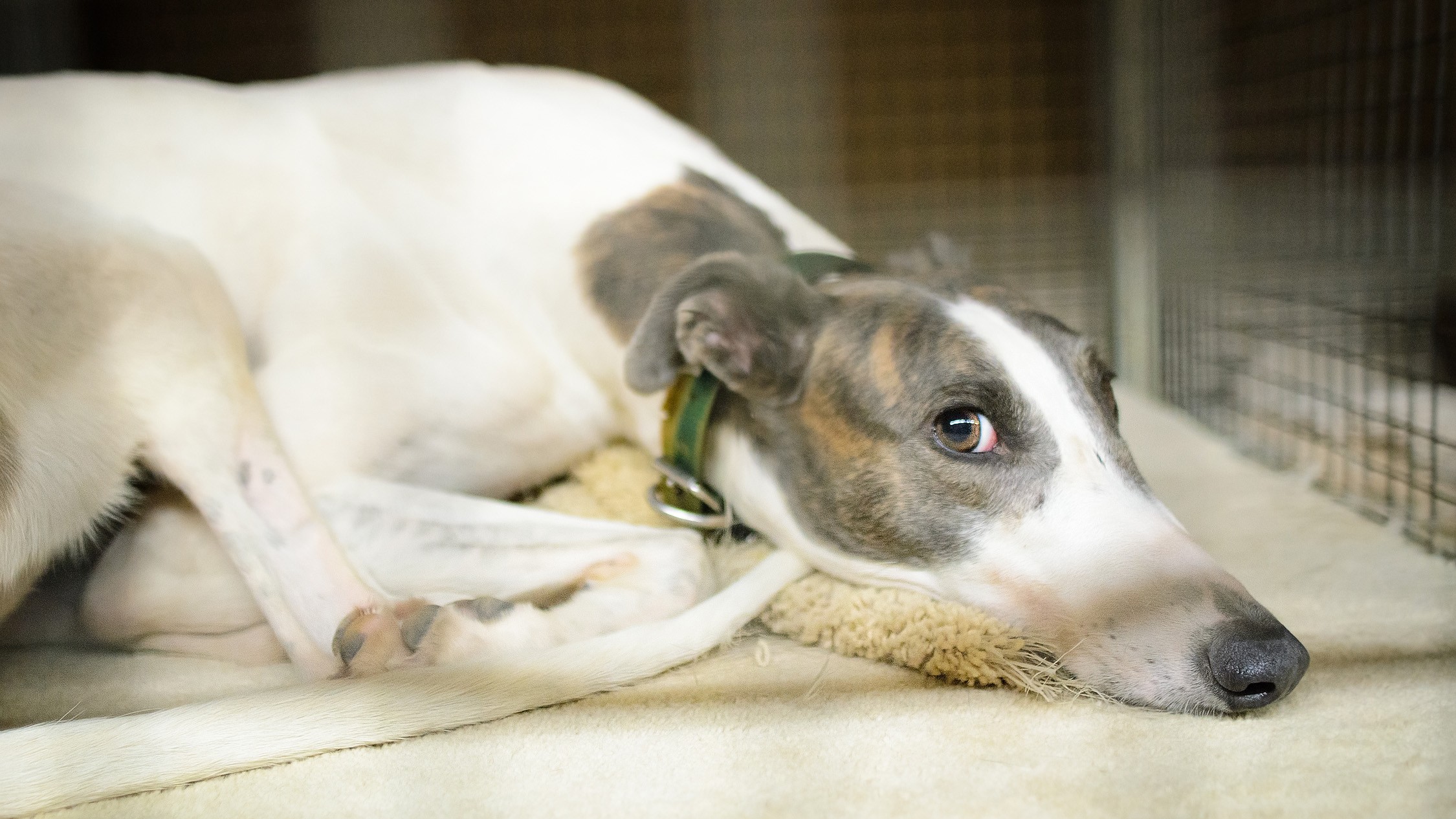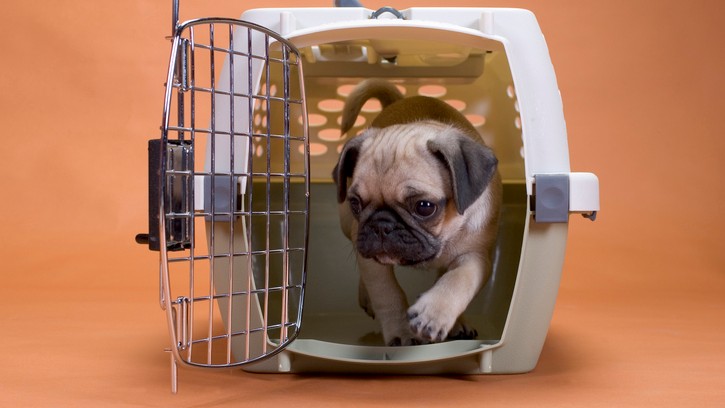When to stop crate training your canine companion
How do you know when to stop crate training your dog? These tips can help!

Knowing when to stop crate training is challenging for a lot of pet parents because each one of our canine companions is so different. Most owners find that an appropriately sized crate is a great tool for their home, not only because it provide your dog with his own private space in which to rest, but it can also be used in a variety of other situations. But figuring out when to start and stop training can be tricky!
A crate can be a useful tool during potty training, or when you need to keep your dog quiet while guests are visiting, or even when you need to keep your dog contained in the car. To ensure your dog’s crate training is a success, it’s extremely important to teach your dog to view the crate as a positive and rewarding space.
But how do you know when it’s time to stop dishing out the best dog treats as a reward for good behavior in the crate? To know when to stop crate training your dog, you’ll need to know the goals of crate training and what a well-trained dog can do.
- Dealing with separation anxiety: Dog crate solutions pros and cons
- How to crate train a rescue dog
Identify your crate training goals
Before starting or stopping any kind of training, it is essential to understand what you are trying to achieve. Good training must always be clear and consistent, so getting the whole family on board with some common goals is the best way to ensure success.
Before deciding to stop crate training, ask yourself and your family what the crate will be used for. Will your dog stay in the crate overnight? Will you use the crate when guests are visiting? Do you intend to use the crate for long car rides?
Identifying these goals and needs will help you determine whether your pup is ready to stop training or whether there is more work to be done to prepare your dog for these environments.
Benefits of crate training
The crate is a useful tool in any dog owning household. One of the main benefits of crate training is that the crate provides your dog with a safe and comfortable resting place – somewhere she can escape to that is entirely her own.
A crate is also useful to keep your dog safely contained when you cannot have her under your direct supervision. This is especially important during potty training, when keeping your dog supervised at all times is necessary to prevent accidents in the house.
Some pet owners also like to use the crate in the car to keep their dog safely contained and prevent them from being a distraction while on the road. There are many potential applications of crate training, so it’s essential to train your dog properly so you can enjoy the full benefits of this useful training tool.
How to stop crate training your dog

In addition to your own personal goals, there are some general guidelines for crate training to keep in mind. Before you stop crate training, you will want to make sure that your dog is comfortable and relaxed in the crate. This means that your dog:
- Willingly gets into the crate when asked
- Does not mind having the crate door closed
- Can rest comfortably in the crate for several hours if needed
- Does not bark, whine, or howl in the crate
- Does not urinate or defecate in the crate
- Does not view the crate as a place of punishment
If your dog has achieved these goals, then it may be time to taper off of your training. However, this doesn’t mean that you stop training entirely! Make sure you stop crate training the right way so that these lessons will stick with your dog for life.
Crate training your dog should primarily focus on teaching your dog to view the crate as a safe and comfortable resting place. This means that crate training should be performed using positive reinforcement – offering a desirable reward like treats or praise in exchange for good behavior. Once your dog is fully crate trained and is reliably meeting all of your crate training goals, you can start to taper off the training by offering these rewards intermittently.
This unpredictable pattern of reinforcement will make your dog even more likely to continue performing the desired behavior because he never knows exactly when he’s going to get that tasty treat! You can gradually taper off the frequency of the reward, but still toss your dog a treat occasionally if you see him behaving well in the crate. This will ensure the behavior continues throughout his life.
Stop crate training when things are going poorly

Many pet owners underestimate the importance of crate training and try to rush through the process. Dogs don’t naturally enjoy being confined away from their owners, so being put in a crate can be very stressful for your dog. Taking the time to train your dog with positive reinforcement is essential to ensure a good crate training outcome.
Unfortunately, even with proper training, some dogs struggle to adjust to the crate. This often occurs due to previous bad experiences with confinement. Your dog may be particularly anxious in the crate if he has a background from a stressful shelter or kennel environment or if he was ever confined for long periods of time. Using confinement in the crate as a punishment can also have a negative impact on your dog and can make crate training much more difficult.
If your dog exhibits signs of stress and anxiety in the crate, it is definitely time to stop crate training and reconsider your options. Signs that crate training has backfired can include:
- Barking, whining, or howling in the crate
- Scratching or chewing the crate
- Attempts to escape from the crate
- Panting while in the crate
- Restlessness, circling, or unable to settle in the crate
- Urinating or defecating in the crate
- Barking, lunging, or trying to bite when approached in the crate
- Refusal to go into the crate
If your dog exhibits any of these anxiety symptoms or if you find yourself Googling things like “indestructible dog crates,” it is definitely time to stop crate training! You may want to restart the crate training process with a focus on positive reinforcement and a plan to proceed with the training much more slowly.
Enlisting the help of a positive reinforcement based dog trainer or a board certified veterinary behaviorist may also be necessary to identify your dog’s triggers and help him overcome his fears. In some cases, finding an alternative to the crate such as an exercise pen may be a better option to alleviate your dog’s fear of confinement.
When to stop crate training your dog

Every dog is different! Some dogs may take longer than others to grasp the concept of crate training and that’s okay. You’ll know that your dog is fully crate trained when he feels safe, relaxed, and comfortable in his crate even for long periods of time. By tapering off your training and using intermittent reinforcement, you’ll teach your dog to maintain good behavior in the crate even without daily training sessions.
PetsRadar Newsletter
Get the best advice, tips and top tech for your beloved Pets
Dr. Elizabeth Racine is a small animal general practice vet covering all things pet health and wellness. Her special interests include veterinary behavior, nutrition, and internal medicine.
As a freelance writer, Dr. Racine has written content for major companies in the industry such as the American Kennel Club, Merck Animal Health, Bayer PetBasics, Elanco, and CareCredit. In her free time, Dr. Racine enjoys playing trampoline dodgeball, hiking with her beagle Dasher, and spending time with her three mischievous cats.

